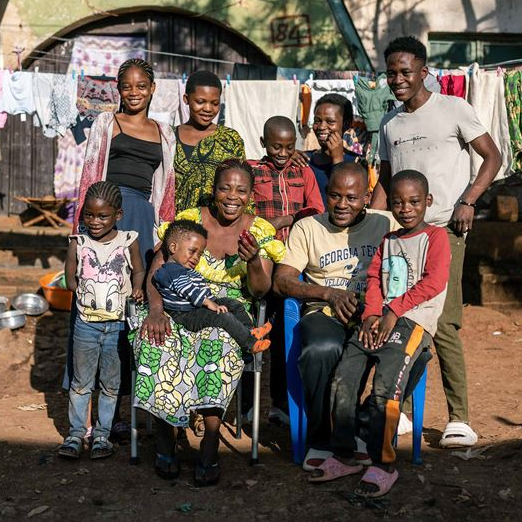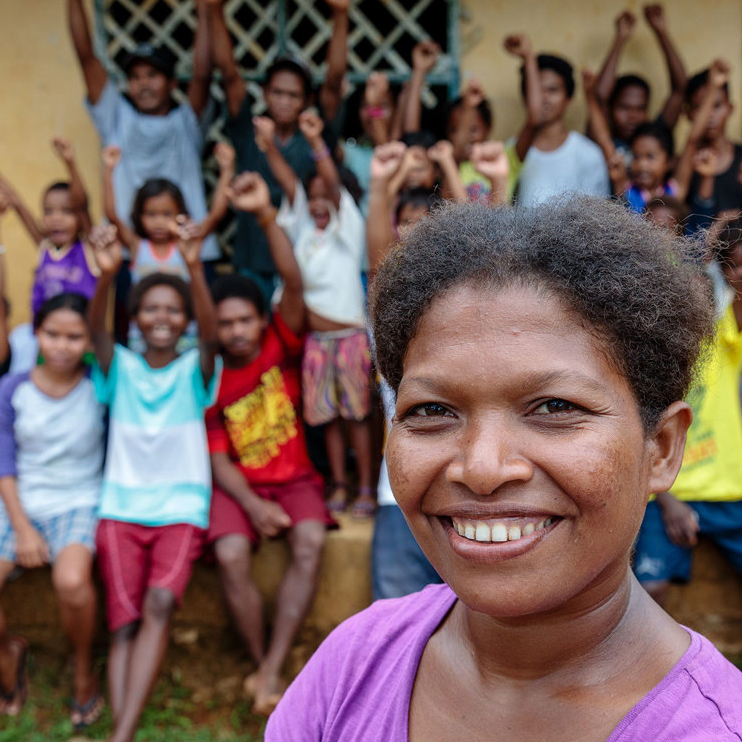Intergenerational poverty in Nepal
16-year-old Laxmi lives in one of the most remote communities in Nepal, where almost half the population are living in poverty.

Laxmi at her home in the Jarjakot district in western Nepal. Photo: Richard Wainwright/Caritas Australia.
Nepal is ranked 106 out of 156 countries on the 2021 Gender Parity Index.
Girls and young women in Nepal face numerous challenges in their everyday life, ranging from early marriage to psychological and sexual violence, fewer opportunities in the workspace to superstitions and societal traditions that disadvantage women. Widows in particular often experience social discrimination from the community.
Challenges for girls in Nepal

Laxmi looks out from a suspension bridge next to her home in Jajarkot district, western Nepal. Photo: Richard Wainwright/Caritas Australia
An estimated 32.8% of women aged 20–24 years old are already married or in a union before they turn 18 (UN Women). Girls who enter into early marriage often do not finish their education and children in vulnerable communities are also particularly at risk of exploitation.

Laxmi outside her home in Jajarkot district, western Nepal. Photo: Richard Wainwright/Caritas Australia
In some communities, girls are barred from schools and homes during their periods due to a tradition called Chhaupadi, which prohibits women and girls from participating in normal family or social activities while menstruating, as they are considered "impure" or might bring “bad luck”.

Laxmi and her mother Mankala work in their fields close to their home in Jajarkot district, western Nepal. Photo: Richard Wainwright/Caritas Australia
Girls and young women, faced with the burden on household chores and patriarchal norms, are at a high risk of dropping out of school to support the family.
How poverty impacts girl's education
This is particularly the case for girls who enter into early marriage or take on household chores to support their family. Child marriages are common, especially in rural areas of Nepal, and the incidence of child marriage is one of the highest in Asia.
When we tackle poverty in vulnerable communities, we improve the likelihood of children finishing school.

Laxmi leading a rally with Child Club members calling for child rights, such as access to education and stopping child marriage and child labour, through villages near her home in Jajarkot district, western Nepal. Photo: Richard Wainwright/Caritas Australia
129 million
girls around the world miss out on an education.
36%
of girls in low-income countries complete secondary school
Video
Laxmi's story
How poverty can be a barrier to women's leadership
In remote communities of Nepal, girls can face numerous challenges and obstacles that prevent them from fulfilling their potential.
Laxmi's dream is to one day become a civil engineer. But like many girls in her community, poverty poses a challenge to her dream.
In vulnerable households, children may need to quit school to help out with their family with chores or engage in child labour to support their family. According to the ILO Child Labour Report 2021, girls are more likely to engage in child labour than boys. In the Karnali province where Laxmi lives, approximately 24.6% of children participate in child labour, the highest in Nepal.
Your support today can help invest in girls like Laxmi, so they can finish their education and become the next generation of young leaders.

Laxmi is now a mentor to other girls in her village, serving as an advisor to her child's club. Photo: Richard Wainwright/Caritas Australia
1.1 million
children in Nepal are involved in child labour
13%
of managerial positions in Nepal are held by women
60%
of women in Nepal can read or write












